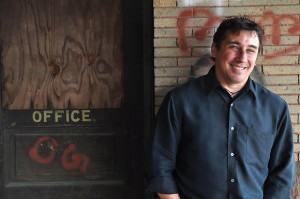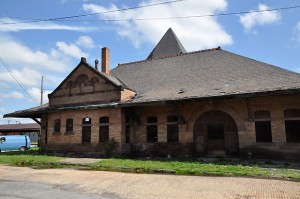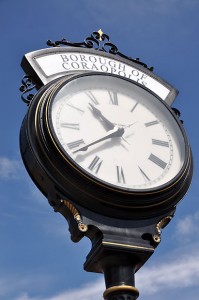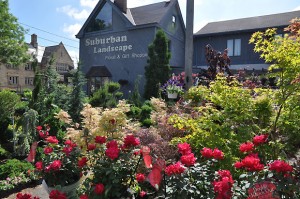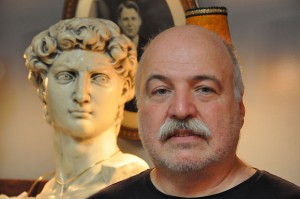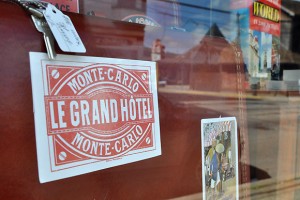
The Insider Guide to Coraopolis
Directing the former, serving as pastor of the latter, Jampetro, a third-generation Coraopoliser, and others are working to bring Coraopolis back to what it once was — or a reasonable facsimile thereof. When Fifth Avenue crackled and was spiffed up with new awnings all along the commercial strip. When there were six bowling alleys, three movie theaters, and too many dance clubs to count. Most important, when the population was a robust 11,086 (1940) instead of 6,131 (2000). “This was the place,” he recalls, “that people came to for recreation.”
These days, they’re banking on the big sports complex in nearby Neville Island and the many soccer fields that will bring in big numbers of out towners. Perhaps they, along with those people on the Montour Trail, will discover Cheers (your up-from-under sports bar), the Jailhouse Saloon, and `Anthony Jr.’s, with its truly outré Frank Sinatra imitator on Saturday nights.
The draw for residents, of course, includes the annual Memorial Day parade, complete with street vendors, snow cones, fire trucks, and folding chairs holding people’s places; as well as the St. Joseph parish festival every August. “There’s a certain continuity in that one piece of community life,” Father Jampetro allows. Still, he says, “Corapolis kept itself alive, but got kind of sloppy.”
Just 1.36 square miles of Ohio River landing, some 15 miles west of Downtown, easily accessed by both I-79 and Route 51, the 2.5-mile-long slice of pie is bordered by Thorn Run and Montour, Neville Island across the river, and hilltop neighbor Moon Township.
Like so many things Pittsburgh, the history of Coraopolis stretches back some 250 years, to the time that the Crown granted interpreter Andrew Montour some 350 acres. By 1773, Robert Vance, a member of Washington’s regiment, had built a log stockade — and grandly called it Fort Vance. Within 30-odd years, the area had morphed into something more civilized and called itself Middletown.
By 1840, the area’s most prominent family had become the Watsons, who owned a sawmill, and later a gristmill. In 1886, the name changed for good, to Coraopolis, either for 16-year-old Cora Watson or Greek for Maiden City, depending on which legend you prefer.
With the Industrial Revolution, Part II, hitting Coraopolis hard, in 1892 the village hosted the country’s first high-speed electric streetcar system — along with Consolidated Lamp and Glass, which employed 350 people. As a steel bedroom community, with its solid houses and easy access, Coraopolis folk worked in the shipyards and mills of nearby Neville Island, Aliquippa, and Ambridge.
Like virtually every traditional Tri-State river town, Coraopolis got hit with the double whammy of mill closures and demographics — what had once seemed like nothing so much as pasture land in Wexford and Washington County was suddenly irresistible for sub-divisions. As the mills closed, businesses dried up and blew away. And good, old fashioned leadership seemed in short supply.
If you build it — or if you believe it, apparently — they will come. Or so say the business owners who are literally banking on a renaissance based on proximity and dollars and sense. Real estate is solid and prices are low. Now’s the time!
Or so say a truly eclectic array of entrepreneurs, fitness center to yoga studio, media transfer companies to engineering firms, plus the requisite pizzerias and old-time hardware stores. “You know the kind,” Jampetro says, “with the old wood floor rubbed down smooth.”
Main Street to Broadway, Fourth Avenue to State Street, “there’s a lot of interesting things going on,” he adds.
And there’s more. Take, for example, the multi-storefront Victory Media Center, with its 27 employees and trio of armed-forces-related magazines — G.I. Jobs, Military Spouse, Vetrepreneur. Created nine years ago in Chris Hale’s Moon Township basement, within a year, Hale & Co. had moved to Coraopolis. “Cheap,” he gestures. “We needed cheap.”
“There’s a lot of opportunity here,” Hale adds, plus benefits all around, not the least of which is that everything is walkable — the bank, dry cleaner, grocery store, car service, drug store, lunch. “That,” he says, “is a tremendous advantage. That kind of convenience creates a better, more productive employee.”
So do all those cozy Colonial Revivals and Victorian fixer-uppers just a short stroll away on Ridge Avenue and further, creeping up the hill toward Moon. “You’re starting to see that turnaround,” nods Vincent Tucceri, an attorney involved in local development. “We’re really excited.”
Excited to the point of adapting a 20,000-square-foot building — complete with original hardwood floors and tin ceilings — for contemporary use.
Finally, we swim over to Uncle Joe’s Scuba — that’s right, a bright, ocean-blue storefront scuba shop not in Shadyside or Sewickley but in Coraopolis. “It’s quiet,” owner Joe Petrella says. “It’s safe. It’s a friendly little town.”
Abby Mendelson’s latest book, End of the Road, a collection of short stories, is available at amazon and bn.com.
Photos: Sam Jampetro; Off the Avenue; Suburban Landscapes garden center; the old railway station; “Uncle” Joe Petrella; clock; Jim Baricella
Photographs copyright Brian Cohen

